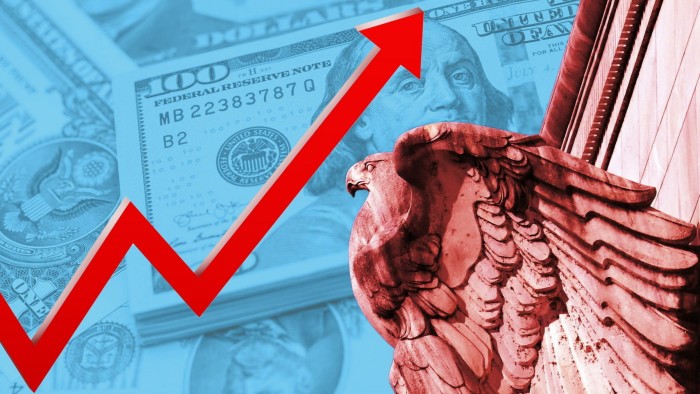Higher rates for longer are a good thing

Simply sign up to the US interest rates myFT Digest -- delivered directly to your inbox.
The writer is a former chair of the US Federal Deposit Insurance Corporation and is a senior adviser to the Center for Financial Stability
They say the good things in life are free. That may be true of walks on the beach or picnics in the park. It is not true of money.
The US Federal Reserve kept money free for nearly 14 years in the name of stimulating the economy. This period of “zero-interest rate policy”, or “Zirp”, was characterised by tepid growth, increased market concentrations, low productivity and yawning wealth inequality. Now that the Fed has shifted to a “higher for longer” stance to combat inflation, our economy will have to make painful adjustments to the rising cost of money. But we need to hold our course. Ultimately, higher rates will lead to a fairer, more productive and resilient economy.
The theory of Zirp is that it boosts consumption and productive capital investments by making it cheaper for businesses and consumers to borrow. But the theory has not proved itself in practice. Economists have struggled to find a correlation between low interest rates and economic growth. Some studies suggest that higher rates are associated with higher economic growth. This is consistent with the US experience.
Take the “boom” years of 1982-1990 and 1991-2001, when annual gross domestic product growth of 4 per cent was typical, in comparison with the 2 per cent Zirp norm. In most of those boom years, short and long-term interest rates far exceeded the levels we see today. Households and businesses still borrowed. The economy hummed.
Free money can actually undermine growth by making an economy less efficient. The more money costs, the more disciplined its allocation. If it’s costless to borrow, money flows into all sorts of unproductive uses. It flows into rampant speculation characterised by the crypto and meme stock crazes. It flows into zombie companies from indiscriminate investors seeking any decent yield. It harms competition by feeding industry concentrations.
Research shows that larger companies disproportionately benefit from the lower rates, which they use to make acquisitions and other investments that increase their market dominance. As their market power grows, they lose incentives to remain agile and competitive as their smaller competitors fall further behind. I’m all for vigorous antitrust enforcement against anti-competitive behaviour. But the industry concentrations that so worry the Biden administration today may have as much to do with low rates as corporate misconduct.
Free money also exacerbates wealth inequality which is detrimental to an economy like ours in the US, which relies on middle class consumption to thrive. Concentrating wealth in the hands of a few diminishes the purchasing power of the rest. Zirp has done little for real wage growth, but it has done wonders in boosting asset prices mostly owned by rich people. It was particularly good for stocks as their expected future earnings became compellingly attractive in comparison to ultra-low Treasury yields. While over half of households directly or indirectly own some stock, 86 per cent of it is owned by the richest top 10 per cent. The benefits of ultra-low mortgage rates were more widely enjoyed, as booming home prices and the ability to refinance enriched millions of families who already owned homes. But renters’ costs also went up, while red-hot housing inflation made home ownership further beyond their reach.
Free money contributes to financial instability, risking crises when inflation inevitably raises its ugly head, and the Fed has to tighten. It encourages excessive levels of borrowing, while incentivising risk taking and speculation among investors searching for yield. As rates rise, bubbles pop, over-extended borrowers default. Even safe, low-yielding assets lose market value. Risks build in unregulated, non-transparent pockets of the financial system. Private funds have exploded in growth — now holding $21tn in assets, according to the Securities and Exchange Commission — as normally risk-averse investors, such as insurance companies and pension funds, have been seduced by the lofty yields produced by their highly leveraged business models. But that model doesn’t work as well when money costs.
The Fed is wise to pause to give our financial system time to adjust. Higher rates will help our economy, but a financial crisis could devastate it. Once we get through this transition, the Fed should fundamentally reassess its belief that a single-minded pursuit of 2 per cent inflation is good for the economy. Any level of inflation erodes real wages, while free money has undercut productivity and sustainable growth. Better that we abandon Zirp for good and rely less on central bankers to run our economies in the future. History, research and plain common sense suggest that we will be better off.
Letter in response to this article:
An alternative view of the Fed’s interest rate record / From Luis Arenzana, Lisbon, Portugal
Comments